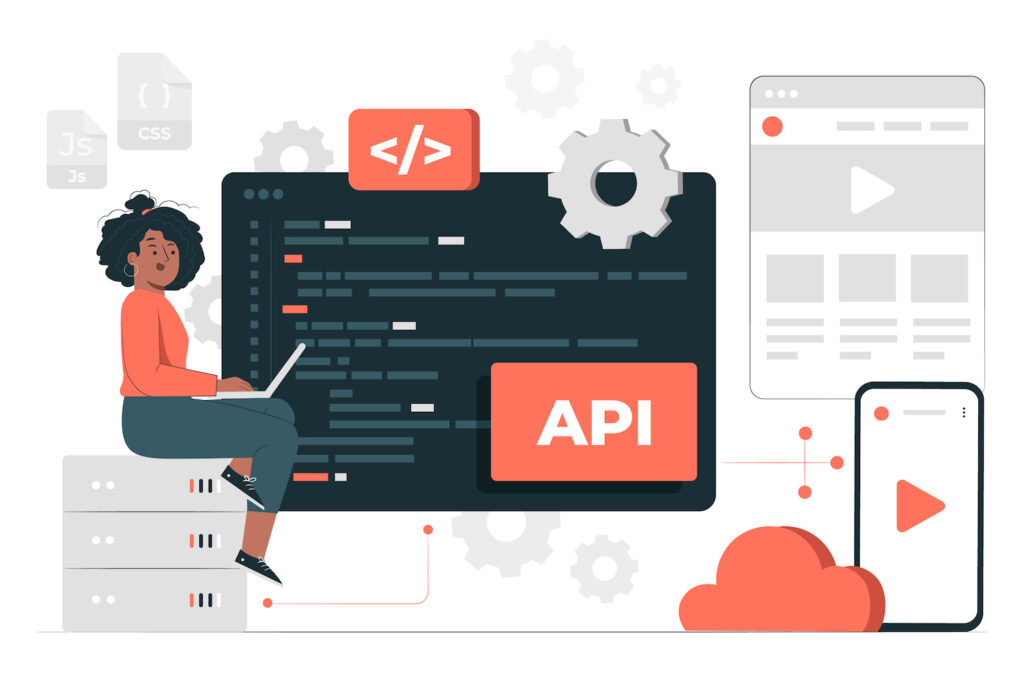- Home
- /
- Product Management
- /
- Understanding Microservices, Building Software Like…
Introduction
In the dynamic realm of software development, architects and engineers are constantly seeking innovative ways to design and deploy applications that are scalable, resilient, and easy to maintain. One such paradigm that has gained widespread popularity is Microservice Architecture. In this blog, we’ll explore the fundamentals of microservices, their advantages, and how they contribute to building robust and flexible software systems.
Understanding Microservice Architecture

Microservice Architecture is an approach to designing software applications as a collection of loosely coupled and independently deployable services. Unlike the traditional monolithic architecture, where an entire application is built as a single unit, microservices break down the system into small, independent services that communicate with each other through well-defined APIs.
Key Characteristics of Microservices

Modularity
Microservices are designed as small, self-contained units, each responsible for a specific business capability. This modularity enhances flexibility, making it easier to develop, test, and deploy individual services.
Independence
Each microservice operates independently, with its own database and minimal dependencies on other services. This autonomy allows for parallel development, scalability, and fault isolation.
Decentralized Data Management
Unlike monolithic architectures, where a single database is used for the entire application, microservices often have their own databases. This enables teams to choose the most suitable database technology for each service.
Communication through APIs
Microservices communicate with each other through well-defined APIs, typically using lightweight protocols such as HTTP/REST or messaging queues. This standardized communication allows for easy integration and versioning.
How are Microservices Different from Monolithic Architecture?

Monolithic architecture is a traditional way of building software where all the functionality of the application is developed and deployed as a single, cohesive unit. This makes it difficult to change individual parts of the application without affecting the rest of the application. In a microservice architecture, the application is broken down into smaller, independent services that can be developed and deployed independently of each other. These services communicate with each other through lightweight APIs, enabling flexibility and faster development cycles.
Advantages of Microservices

Scalability
Microservices can be individually scaled based on specific requirements, allowing for efficient resource utilization and cost optimization.
Fault Isolation
If one microservice fails, it doesn’t necessarily affect the entire system. The fault is contained within that service, ensuring the overall stability of the application.
Continuous Deployment
Microservices support continuous integration and deployment, enabling rapid and frequent updates without disrupting the entire system.
Technology Diversity
Teams can choose the most suitable technology stack for each microservice, promoting innovation and flexibility.
Improved Maintenance
Updating or fixing issues in a single microservice is simpler than dealing with an entire monolithic application. This makes maintenance more manageable and less time-consuming.
When to Consider Microservices

While microservices offer numerous advantages, they are not a one-size-fits-all solution. Here are some scenarios where microservices might be a good fit:
Large and complex applications
Breaking down a complex system into smaller, manageable services can simplify development and maintenance.
Frequently changing requirements
Microservices enable faster adaptation to evolving business needs and feature updates.
Heterogeneous teams
Different teams can work on independent services using their preferred technologies and tools.
Real-World Cases of Companies Embracing Microservices

Many companies have successfully adopted microservice architecture to improve their software development and deployment processes. Here are a few examples:
Netflix
Netflix is a well-known example of a company that has embraced microservices. Their architecture consists of hundreds of microservices responsible for different components of their streaming platform, such as user authentication, recommendation engine, content delivery, and more. This allows them to scale different services independently and ensure high availability and performance.
Amazon
Amazon has also adopted microservices extensively. Their platform is built on a suite of microservices that handle various functionalities like inventory management, order processing, payment processing, recommendation systems, and more. This architecture enables them to continuously innovate and release new features and services quickly.
Uber
Uber relies on microservices to power its ride-sharing platform. They have separate microservices for user authentication, ride request management, payment processing, mapping and location services, and more. This architecture allows Uber to scale efficiently, handle high volumes of requests, and support multiple features across their platform.
Spotify
Spotify utilizes microservices to deliver its music streaming service. They have separate microservices for different functionalities like user authentication, music recommendation, playlist management, and content delivery. This modular architecture enables them to provide a seamless and personalized music experience to millions of users worldwide.
Airbnb
Airbnb’s platform is also built on microservices. Their architecture consists of various microservices responsible for tasks like property search, booking management, payment processing, messaging, and more. Microservices allow them to handle the complexity of their platform while maintaining scalability and flexibility.
These are just a few examples of companies that have successfully implemented microservice architecture. Many other organizations across different industries, such as PayPal, SoundCloud, and Twitter, have also adopted microservices to improve their software development and deliver innovative products and services to their users.
Companies Transitioning to Microservices from Monolithic Architecture

Here are a few examples of companies that have successfully transitioned from a monolithic architecture to a microservices architecture and the benefits they have gained:
eBay
eBay, an e-commerce giant, transformed its monolithic architecture into a microservices-based architecture. By breaking down their monolith into smaller, independent microservices, they achieved improved scalability, agility, and faster time-to-market for new features. The transition allowed teams to work in a more decoupled manner, deploying updates and enhancements to specific services without impacting the entire application. This architecture change significantly improved their development and deployment processes.
PayPal
PayPal, a well-known digital payment platform, adopted a microservices architecture to enhance scalability, resilience, and developer productivity. The move from a monolithic architecture to microservices provided them with the ability to scale individual services based on demand, effectively handling peak loads. It allowed teams to work autonomously on specific services, promoting quicker development and deployment cycles. The microservices architecture also improved fault tolerance and reduced downtime.
The Guardian
The Guardian, a renowned news organization, transitioned from a monolithic architecture to microservices to address the challenges of a rapidly evolving news industry. By decomposing their monolith, they were able to scale specific services independently, enabling them to handle high traffic and deliver real-time news updates efficiently. The microservices architecture also empowered cross-functional teams to work on different services concurrently, leading to faster innovation and improved delivery of news content.
SoundCloud
SoundCloud, a popular music streaming platform, migrated from a monolithic architecture to a microservices-based architecture to scale its platform and enhance developer autonomy. By splitting their monolith into smaller services, they achieved improved scalability, allowing them to efficiently handle growing user demand. The microservices architecture enabled independent development and deployment cycles, leading to quicker updates and feature releases. It also facilitated the adoption of new technologies and improved fault isolation.
Zalando
Zalando, a leading European online fashion platform, undertook a successful transition from monolithic architecture to microservices-based architecture. By embracing microservices, they achieved improved scalability, agility, and fault tolerance. The decoupled nature of microservices allowed independent teams to work on different services concurrently, enabling faster delivery of features and improvements. The architecture change also paved the way for better scalability and resilience during peak shopping periods.
These companies successfully leveraged microservices to improve scalability, agility, fault tolerance, and productivity. The transition allowed them to address specific challenges associated with their respective industries and cater to the evolving needs of their users while maintaining a robust and highly available software ecosystem.
Challenges and Considerations

Complexity of Distributed Systems
Microservices introduce the complexity of managing a distributed system. Proper monitoring, logging, and error-handling mechanisms become crucial.
Data Consistency
Ensuring data consistency across multiple microservices can be challenging. Implementing strategies like eventual consistency is often necessary.
Increased Overhead
The overhead of managing multiple services, communication channels, and independent databases can be higher compared to a monolithic architecture.
Frequently Asked Questions (FAQs) on Microservices Architecture

How does Microservices differ from Monolithic Architecture?
In Monolithic Architecture, an entire application is built as a single unit, while Microservices break down the application into small, modular services, allowing for better scalability and maintenance.
What are the key characteristics of Microservices?
Microservices are known for their modularity, independence, decentralized data management, and communication through well-defined APIs.
Why is scalability a significant advantage of Microservices?
Microservices can be scaled independently, allowing for efficient resource utilization and the ability to handle varying workloads without affecting the entire system.
How do Microservices ensure fault isolation?
If one microservice fails, it doesn’t impact the entire system. Faults are contained within the specific service, ensuring overall system stability.
What is continuous deployment in the context of Microservices?
Continuous deployment is the ability to make frequent updates to individual microservices without disrupting the entire application, enabling faster development cycles.
How do Microservices support technology diversity?
Each microservice can use its own technology stack, allowing development teams to choose the most suitable tools and technologies for the specific functionality of each service.
What challenges are associated with Microservices?
Challenges include the complexity of managing distributed systems, ensuring data consistency across services, and dealing with increased overhead due to the management of multiple services.
How does data consistency work in a Microservices Architecture?
Maintaining data consistency across multiple microservices can be challenging, and often, eventual consistency strategies are employed to synchronize data over time.
Is Microservices Architecture suitable for all types of applications?
While Microservices offer many benefits, they may not be suitable for all applications. The decision depends on factors like the complexity of the project, team expertise, and specific business requirements.
How do Microservices contribute to improved maintenance?
Updating or fixing issues in a single microservice is simpler than dealing with an entire monolithic application, making maintenance more manageable and less time-consuming.
Can existing monolithic applications be converted to Microservices?
Yes, it is possible, but it requires careful planning and execution. The migration involves breaking down the monolith into smaller, manageable services while maintaining functionality.
Conclusion

Microservice Architecture offers a compelling solution to the challenges posed by traditional monolithic systems. Its modular, independent, and scalable nature empowers development teams to build flexible and resilient applications. While adopting microservices requires careful consideration of the associated challenges, the benefits in terms of scalability, fault isolation, and continuous deployment make it a powerful choice for modern software development. As technology continues to evolve, microservices are likely to play a significant role in shaping the future landscape of software architecture.












Leave a Reply